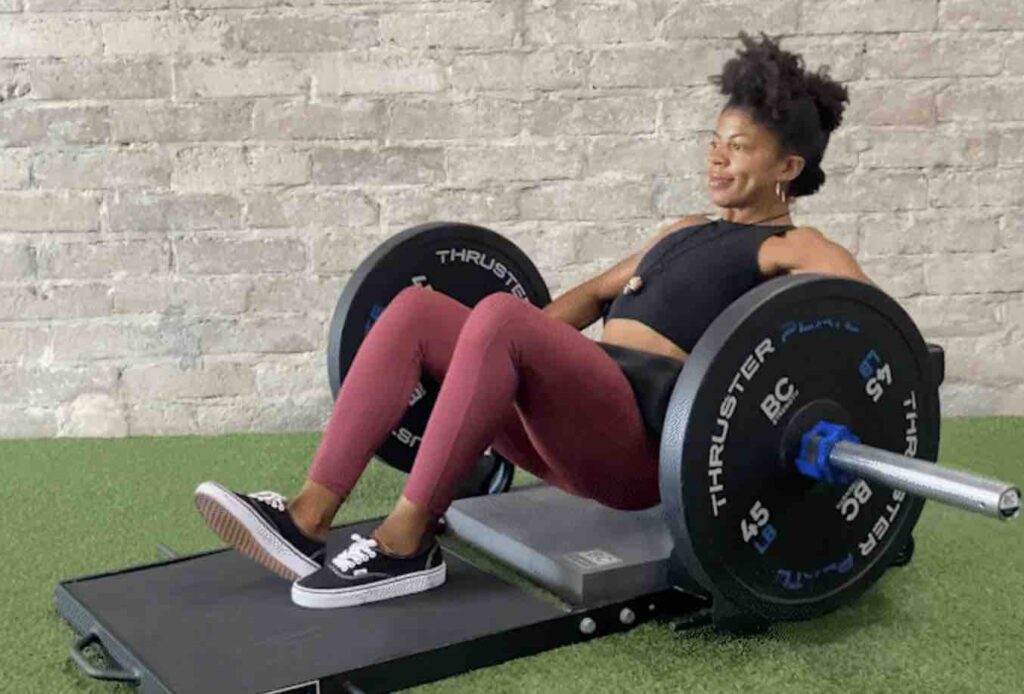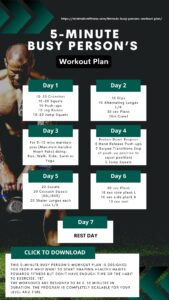B stance exercises are a popular type of workout routine that can help improve balance, stability, and overall fitness. These exercises involve standing with one foot in front of the other, creating a stance that resembles the letter “B”. While this may seem like a simple position, it can provide a challenging and effective workout for the body.
Key Takeaways
- B stance exercises involve standing with one foot in front of the other, creating a challenging workout for the body.
- Understanding proper form and engaging the correct muscles is key to getting the most out of B stance exercises.
- Key B stance exercises include rdls, hip thrusts, lunges, squats, and deadlifts, and can be modified and varied to add intensity and variety to a workout.
- After training clients for a decade, B stance exercises are a fantastic intermediate position before progressing to more demanding single stance movements
Understanding B Stance Exercises
B stance exercises are a type of unilateral exercise that is great for improving balance and stability. In a B stance exercise, one foot is positioned slightly in front of the other. This stance challenges the muscles on one side of the body more than the other, making it a great way to correct muscle imbalances.
B stance exercises are also great for improving core strength and stability, as they require the core muscles to work harder to maintain balance. Additionally, they can help improve hip mobility and flexibility, which can reduce the risk of injury during other exercises.
Related Posts:
- Hip Hinge: The Ultimate Guide to Proper Form and Benefits
- Hip Mobility: 14 Exercises You Can Master Today!
Key B Stance Exercises
B-Stance RDL or Kickstand Deadlift
The B-stance RDL or “kickstand deadlift” is a variation of the traditional Romanian deadlift that emphasizes single-leg stability and control.
For correct B stance RDL form, stand with one foot slightly behind the other, with the toes of the rear foot touching the heel of the front foot. Keeping the weight in the front foot, hinge at the hips and lower the weight towards the ground, stopping just below knee height. This exercise targets the glutes, hamstrings, and lower back.

B-Stance Hip Thrust
The B stance hip thrust is a great exercise for targeting the glutes and hamstrings. To perform a hip thrust in a B stance, position one foot slightly behind the other and place the weight on the front foot. Keeping the weight in the front foot, lift the hips towards the ceiling while maintaining balance and control.
Here’s a great example of what the B stance hip thrust looks like:

B-Stance Squat
The B-stance squat is a variation of the traditional squat that emphasizes single-leg stability and control. To perform this exercise, stand with one foot slightly behind the other, with the toes of the rear foot touching the heel of the front foot. Keeping the weight in the front foot, squat down as low as possible while maintaining balance and control.
B-Stance Lunges
Lunges are a great way to work the legs and glutes while also improving balance and stability. To perform a lunge in a B stance, step one foot slightly behind the other and lower the back knee towards the ground while keeping the weight on the front foot.
Keep in mind you feet should be closer together than when performing a traditional lunge.
B-Stance Deadlifts
Deadlifts are a classic exercise for building strength in the posterior chain, similar to the B stance RDL, but done with a barbell. To perform a deadlift in a B stance, stand with one foot slightly behind the other and hinge at the hips while keeping the weight in the front foot. This exercise targets the glutes, hamstrings, and lower back. Don’t forget to keep the weight light enough to maintain perfect form.
Get Fit in 5 Minutes

Too Busy to Work Out?
In 5 minutes a day, you’ll create an easy-to-follow workout habit that fits your busy schedule.
Related Posts:
Benefits of B Stance Exercises
Here are some of the key benefits of incorporating B stance exercises into your fitness routine:
Improves Strength
B stance exercises are great for building strength in the legs, glutes, and core. By standing on one leg and performing exercises with the other leg, you are challenging your muscles to work harder to maintain balance and stability. This increased effort leads to greater stability and strength gains and reduced injury risk over time.
Targets Hip and Trunk Stability
B stance exercises are particularly effective at targeting the hips and core. By standing on one leg, you engage the hip muscles, which are responsible for stabilizing the pelvis and supporting the lower back. Additionally, the core muscles must work harder to maintain balance and stability, leading to increased strength and endurance.
Improves Posture
B stance exercises can also help improve posture. By engaging the core and hip muscles, you can help support the spine and maintain proper alignment. This increased awareness of posture can translate to improved posture in daily activities, reducing the risk of back pain and injury.
Equipment for B Stance Exercises
B stance exercises can be performed with a variety of equipment, depending on the individual’s preferences and fitness level. Here are some of the most commonly used equipment for B stance exercises:
Barbell
B stance exercises can be performed with a barbell, which is a long metal bar with weights on either end. The barbell can be used for exercises like B stance deadlifts, B stance squats, and B stance lunges. Using a barbell adds an extra challenge to the exercise and helps build strength in the lower body.
Dumbbells
Dumbbells are handheld weights that can be used for a variety of B stance exercises. They can be used for exercises like B stance dumbbell squats, B stance dumbbell deadlifts or rdls, and B stance dumbbell lunges.
Kettlebell
Kettlebells are another popular piece of equipment for B stance exercises. They are similar to dumbbells but have a unique shape that allows for a wider range of motion. Kettlebells can be used for exercises like B stance rdls and B stance kettlebell swings.
Resistance Band
Resistance bands are a great option for those who want to add resistance to their B stance exercises without using weights. They are lightweight and portable, making them easy to use at home or on the go and are great for B stance hip thrusts when you don’t have access to traditional gym equipment.
Injury Prevention and Correct Form
When performing B stance exercises, it’s important to prioritize injury prevention and correct form. Here are some tips to keep in mind:
- Neutral spine: Maintaining a neutral spine is crucial to avoid lower back injuries. Make sure to engage your core and keep your back straight throughout the exercise.
- Knee position: Proper alignment of the knees is also important to prevent knee injuries. Make sure your knees don’t collapse inward.
- Upper back posture: Keep your upper back straight and avoid rounding your shoulders. This will help prevent upper back and shoulder injuries.
To ensure correct form, it can be helpful to start with lighter weights and focus on proper technique before increasing the weight.
Related Posts:
Common Mistakes and Corrections
Mistake: Feet too close together
One of the most common mistakes people make when performing B stance exercises is having their feet too close together. This can lead to poor balance and stability, making the exercise less effective. To correct this, make sure your feet are shoulder-width apart, with one foot slightly in front of the other but not too close.
Mistake: Poor form
Another common mistake is poor form. This can include rounding the back or hunching the shoulders. To correct this, focus on maintaining a neutral spine, keeping your shoulders down and back, and maintaining this throughout the movement.
Mistake: Loading up too quickly
B stance exercises require coordination between the upper and lower body. If you’re struggling with coordination, start with a lighter weight or no weight at all, and focus on the movement pattern. As you become more comfortable with the exercise, gradually increase the weight.
Mistake: Strength imbalances
Finally, strength imbalances can also be a common issue when performing B stance exercises. This is because one leg is doing more work than the other. To correct this, start with your weaker leg first, and only do as many reps with your stronger leg as you can with your weaker leg. Over time, your strength imbalance should improve.
Frequently Asked Questions
What are the benefits of incorporating B-stance exercises into a workout routine?
Incorporating B-stance exercises into a workout routine can help improve balance, stability, and strength. These exercises can also help target specific muscles, such as the glutes, hamstrings, and quadriceps.
What muscles do B-stance RDLs target?
B-stance RDLs primarily target the hamstrings, glutes, and lower back muscles. These muscles are responsible for stabilizing the body and controlling movement during the exercise.
What is correct b stance RDL form?
The correct B Stance RDL form involves standing with one foot slightly behind the other, knees slightly bent, and hinging at the hips while keeping the back straight as you will see in my demonstration above in the article. Maintain a neutral spine and engage the core, lowering the weight alongside (Kettlebell or Dumbbell) or in front of the lead leg (Barbell) while keeping the chest up. Ensure the rear leg remains just in touch with the ground for balance.
How do you properly perform a B-stance squat?
To perform a B-stance squat, stand with one foot in front of the other, with the back foot slightly behind the front foot. Keep your weight on the front foot and lower your body down into a squat position. Return to the starting position and repeat on the other side.
What is the difference between B-stance and split stance exercises?
B-stance exercises involve having one foot in front of the other, with the back foot just slightly behind the front foot. Split stance exercises involve having one foot in front of the other, but further apart. In the bottom of the split stance movement, knees are often bent in a 90/90 position. B-stance exercises require more balance and stability than split stance exercises.
Can B-stance RDLs be done with one dumbbell?
Yes, B-stance RDLs can be done with one dumbbell. Hold the dumbbell in the hand opposite the front foot and perform the exercise as usual.
Are B-stance exercises more effective for targeting the glutes compared to other exercises?
B-stance exercises can be effective for targeting the glutes, but they are not necessarily more effective than other exercises. It is important to incorporate a variety of exercises into a workout routine to target all muscle groups and prevent muscle imbalances.